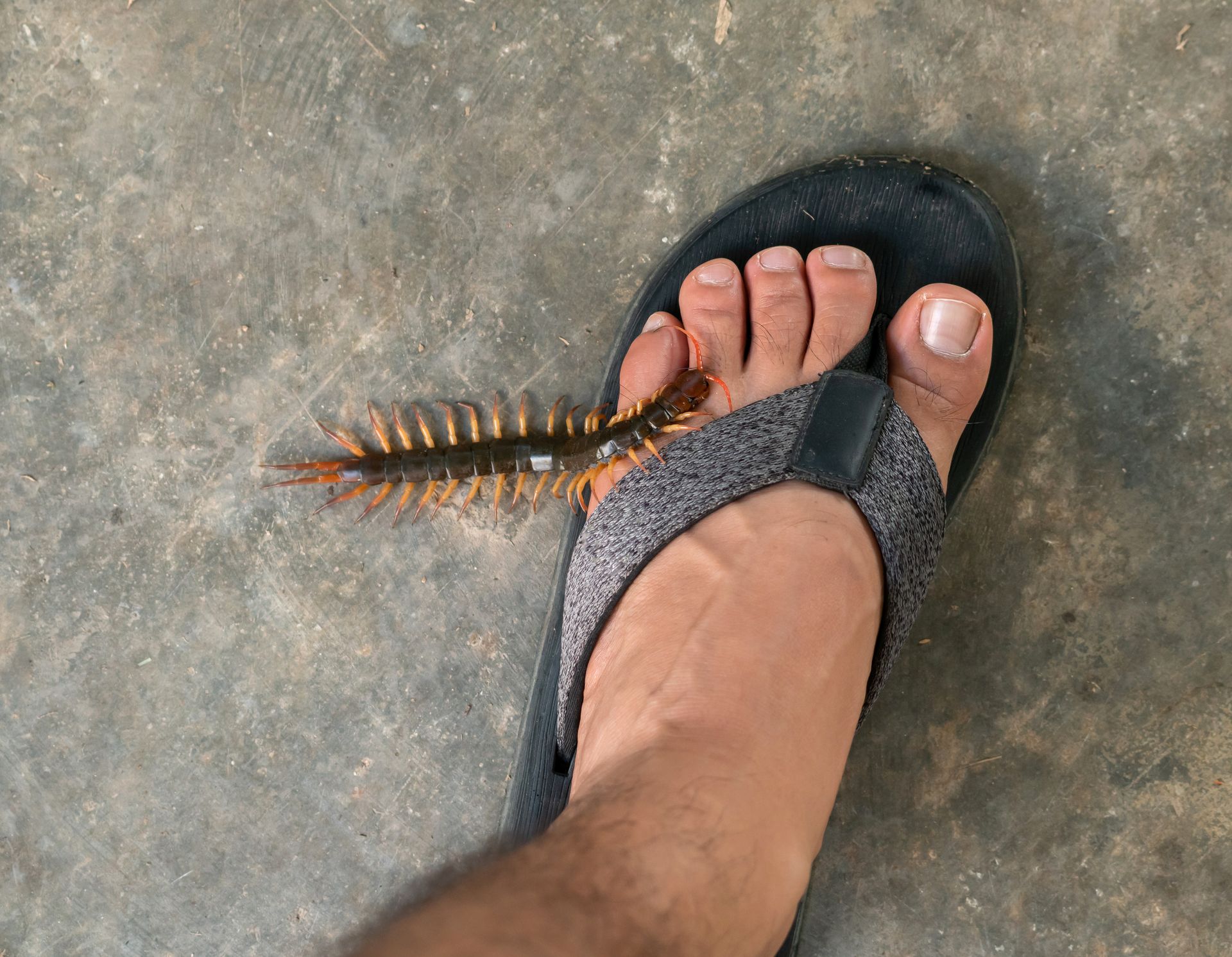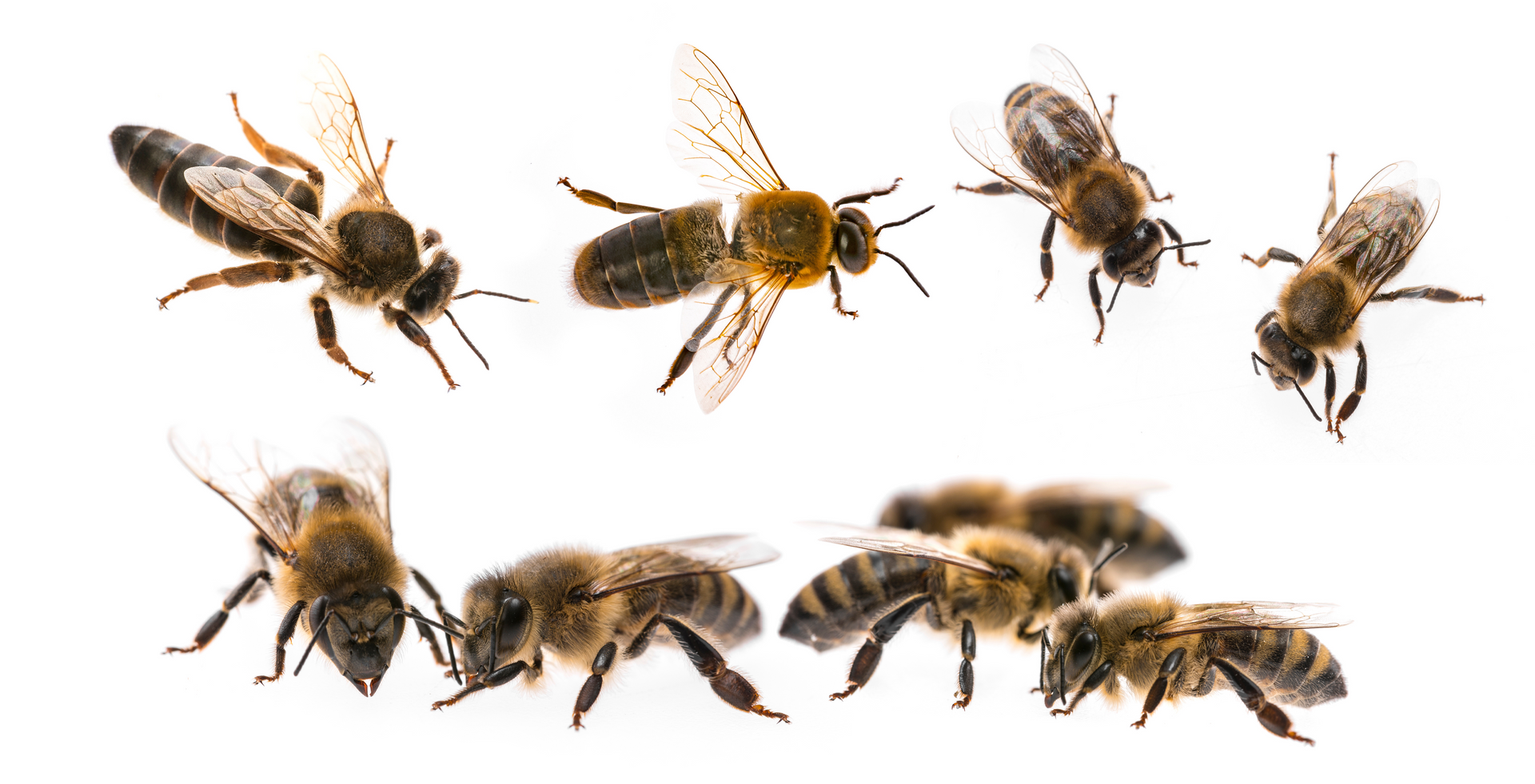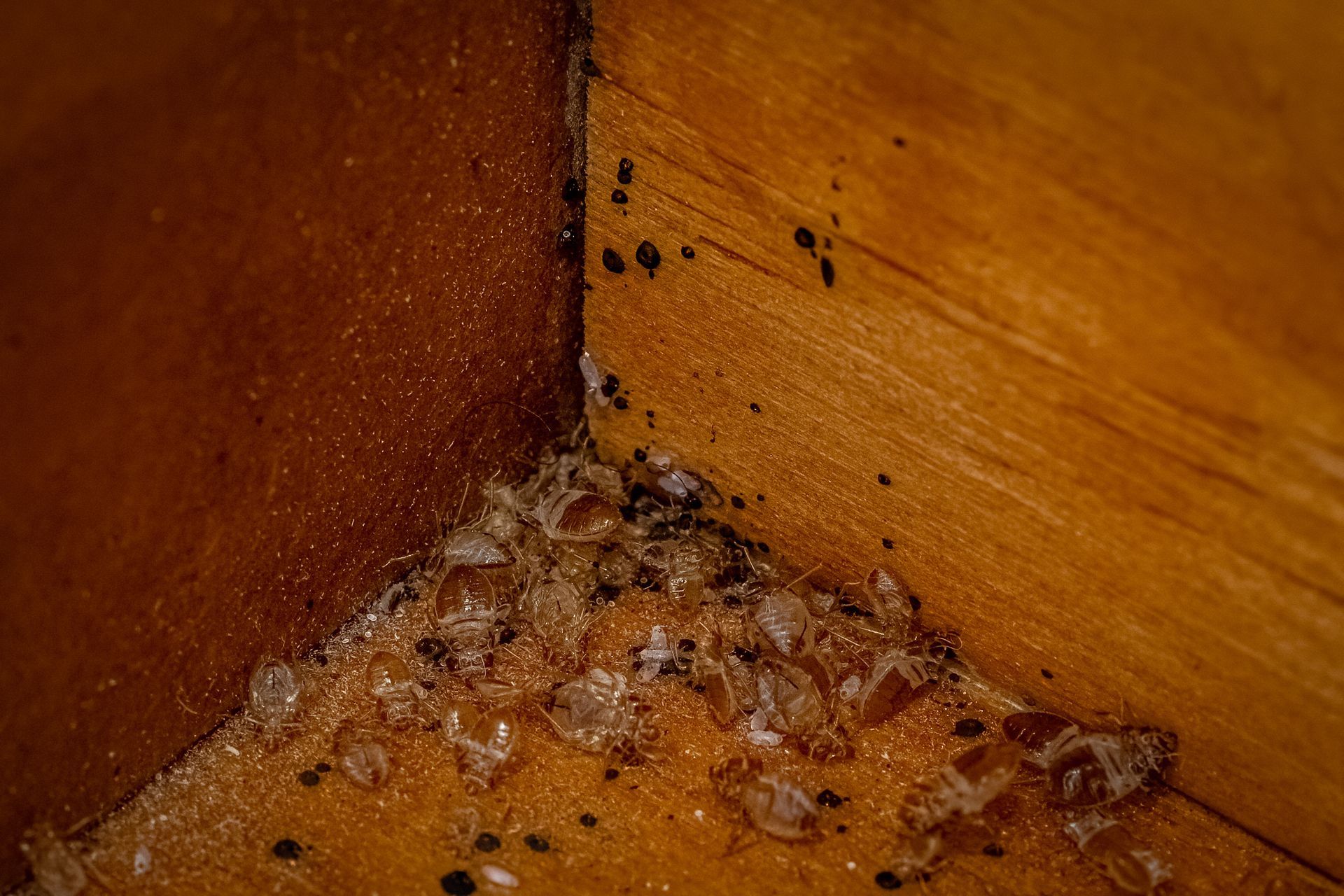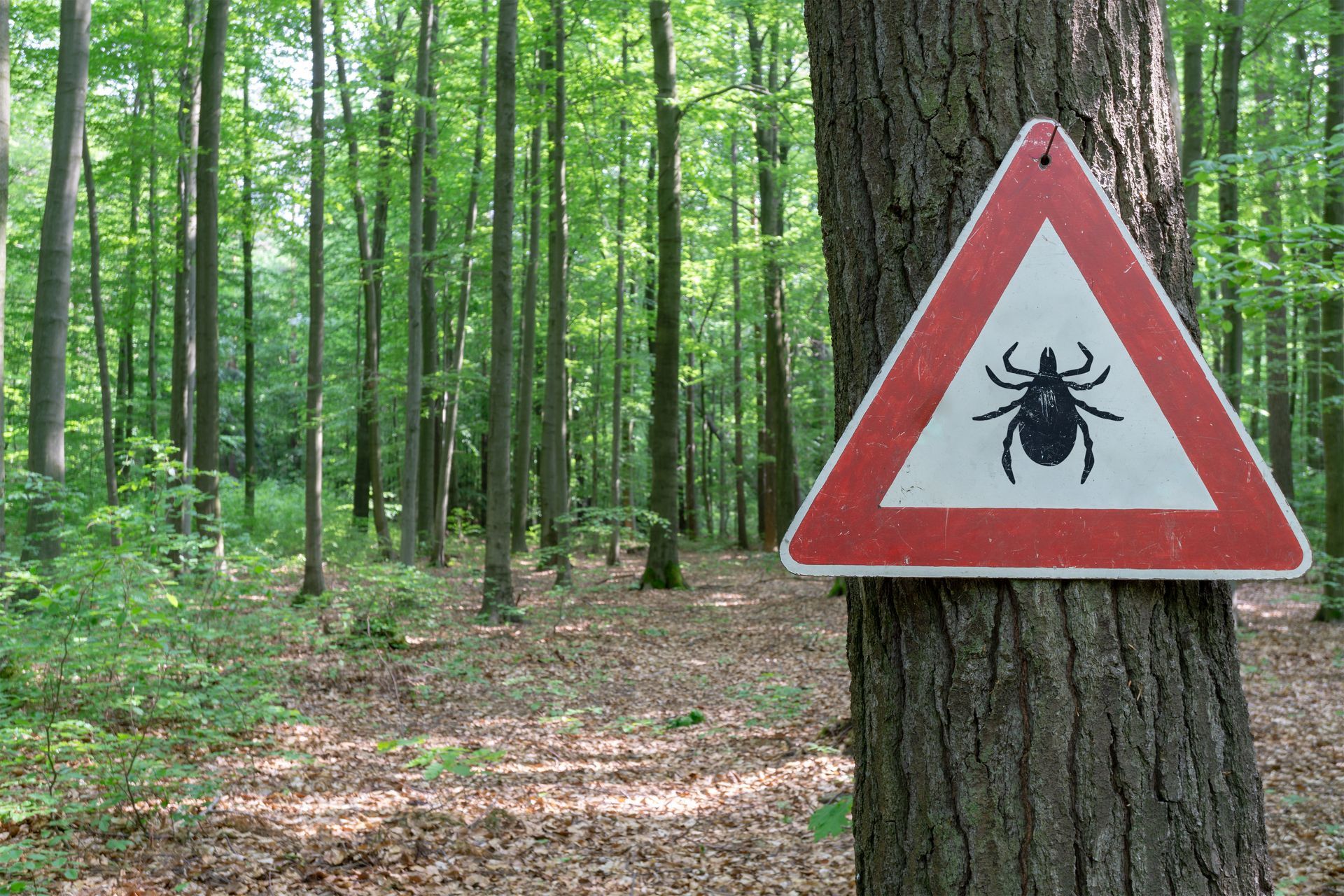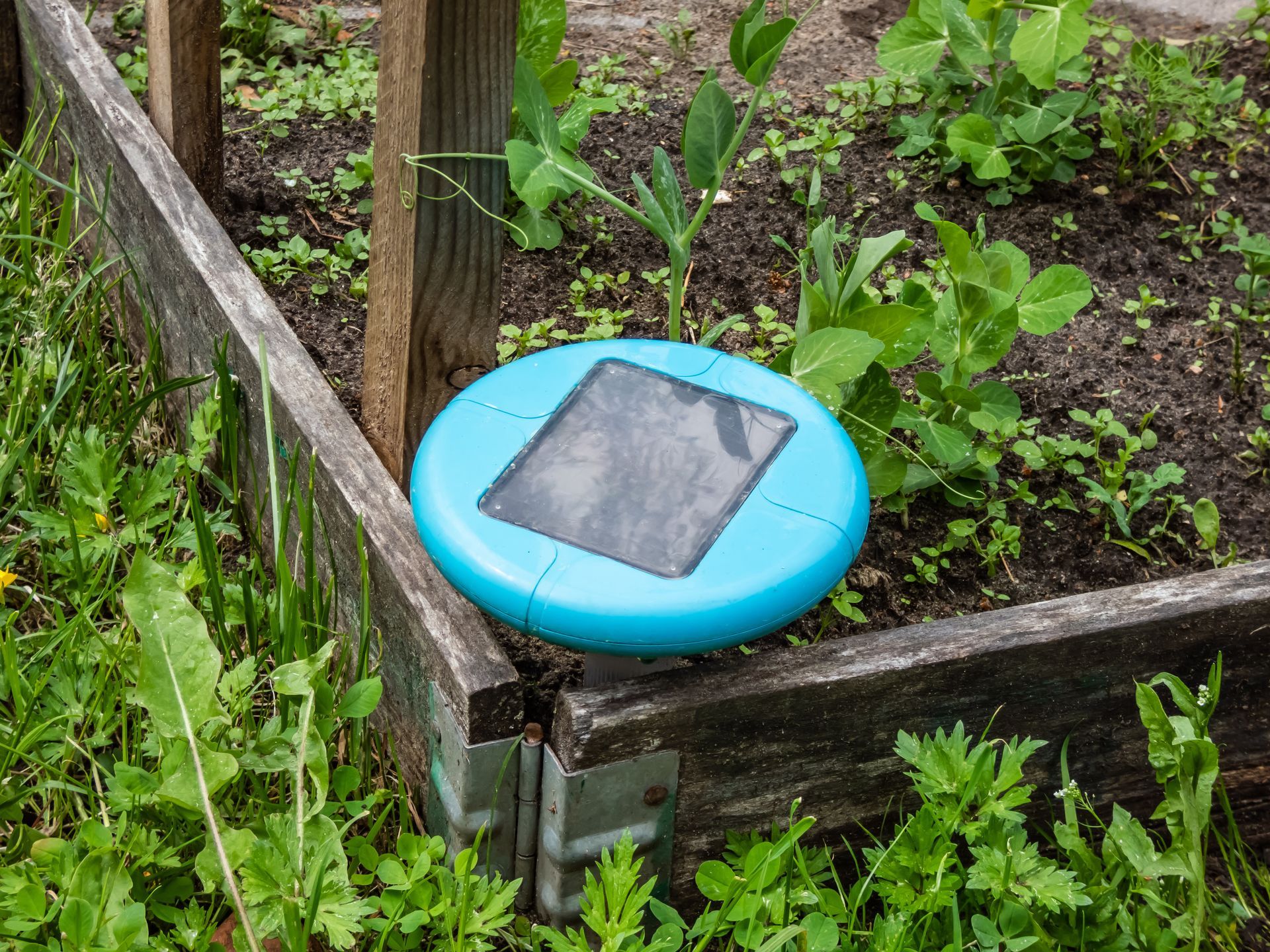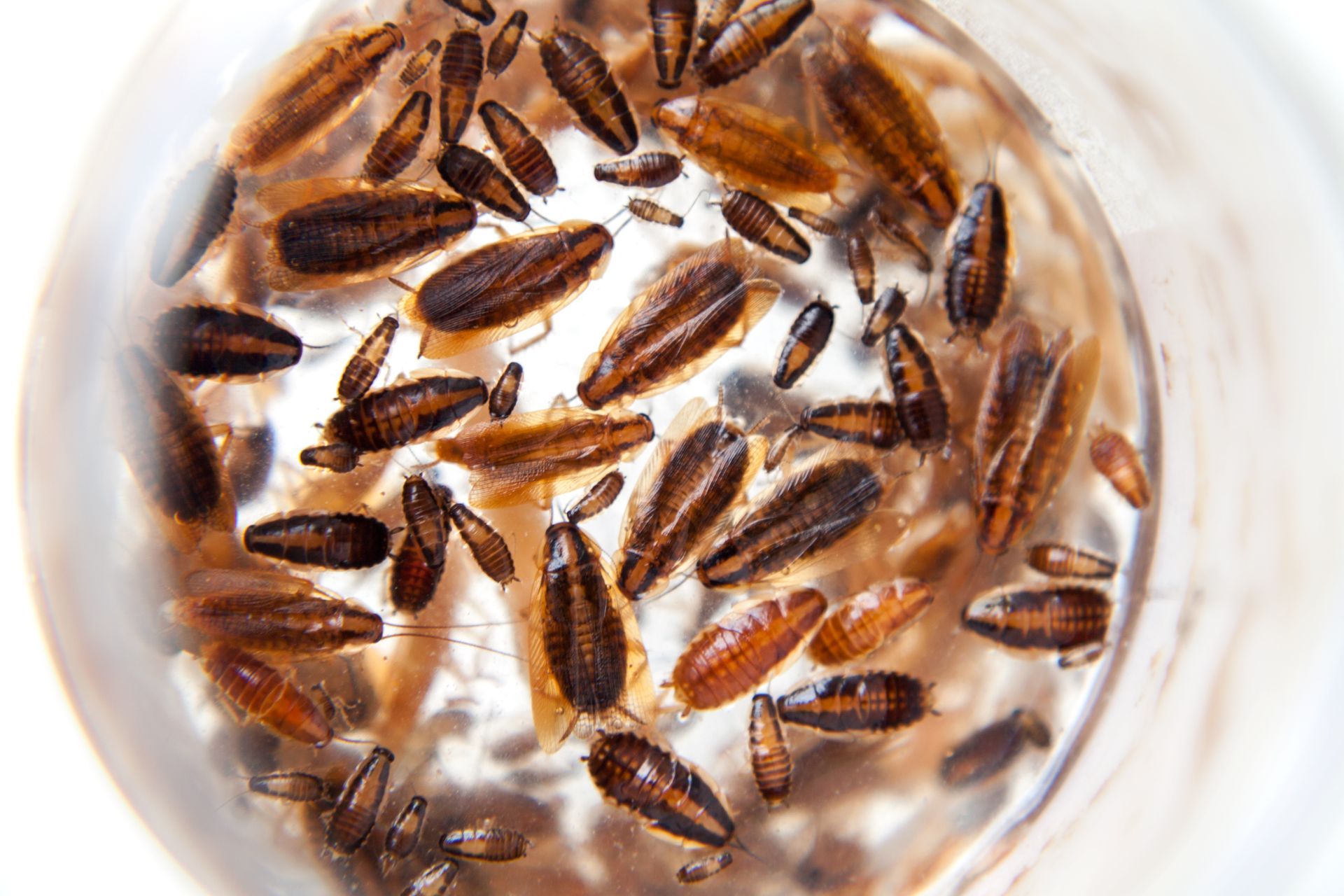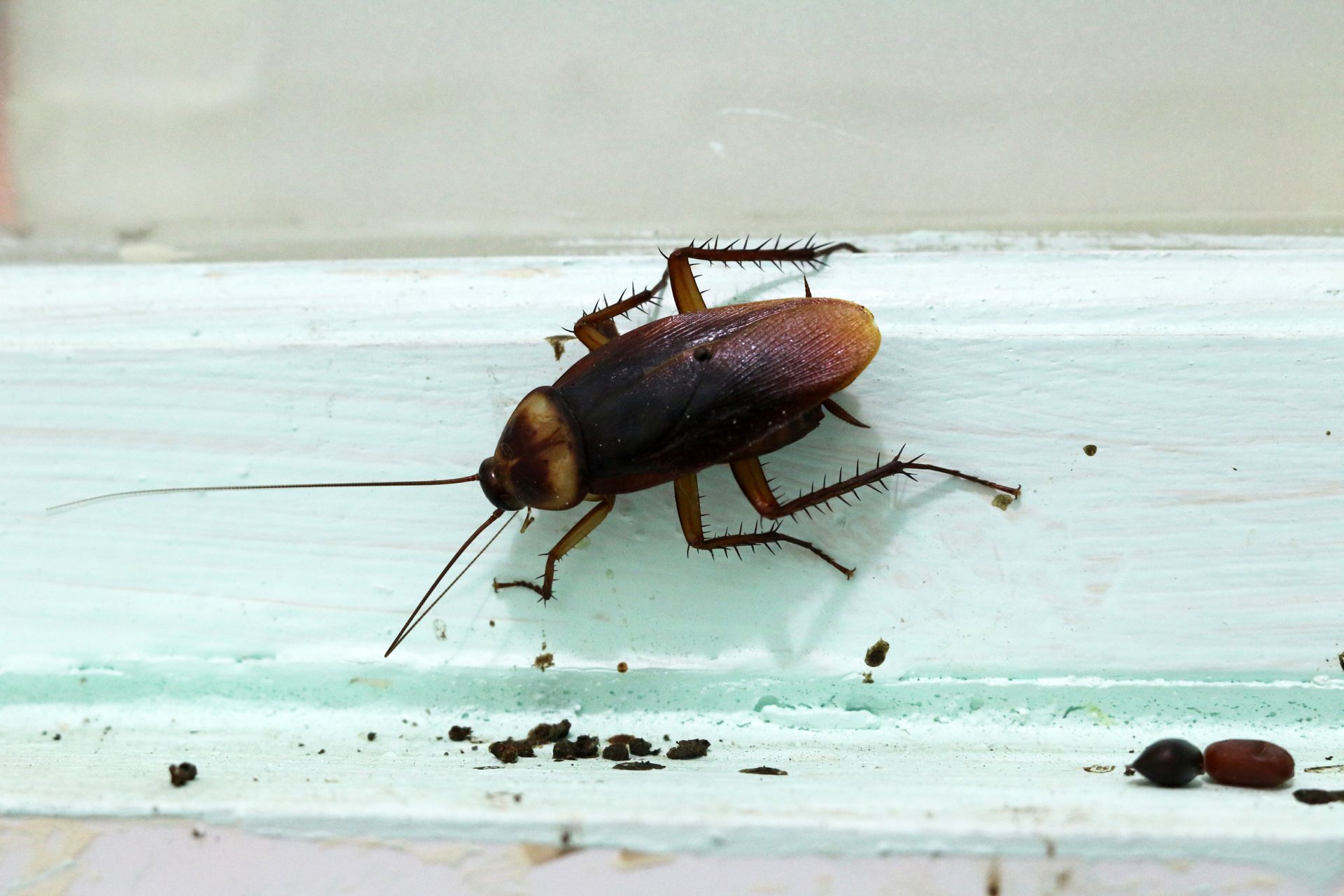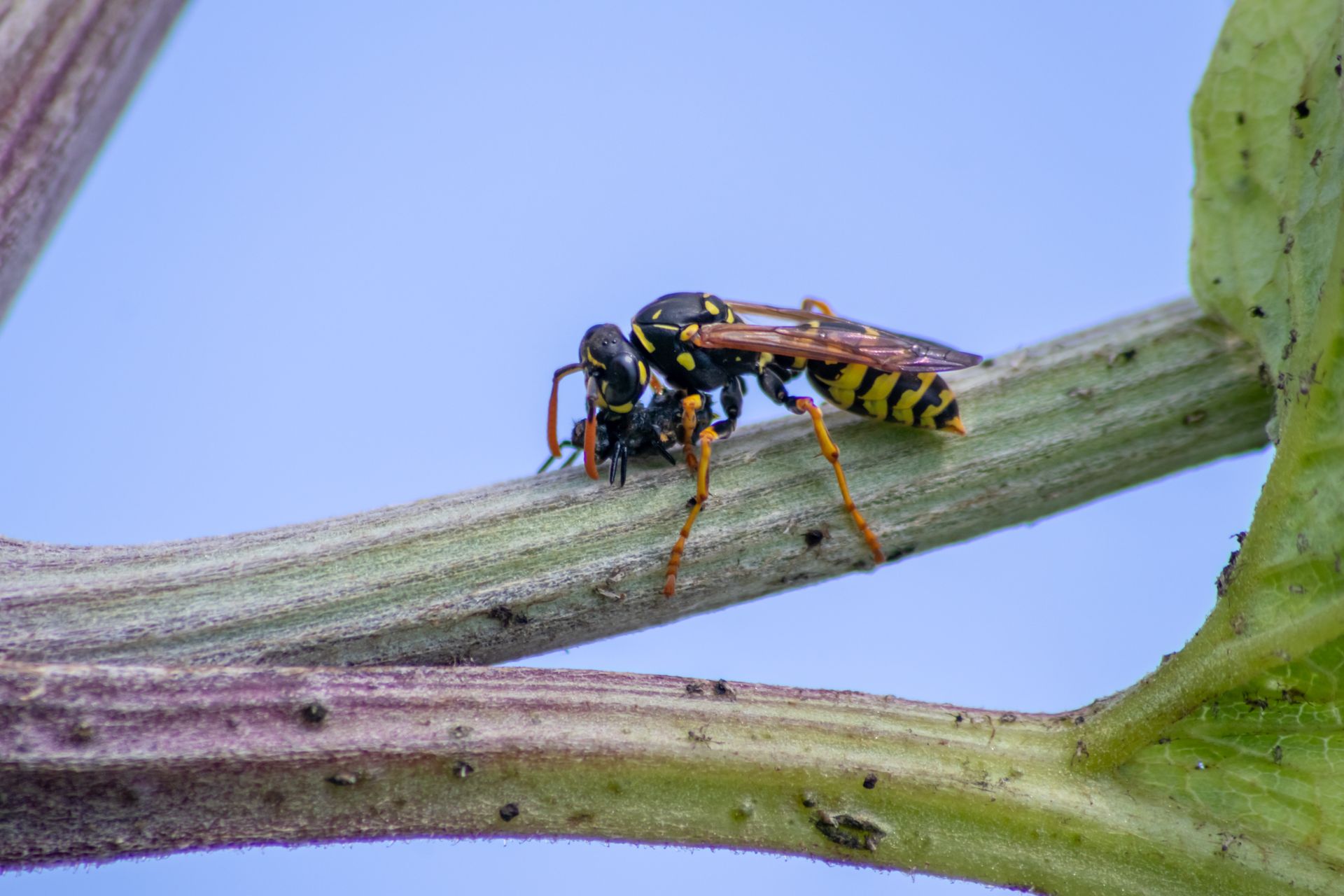Complete Guide to German Cockroaches
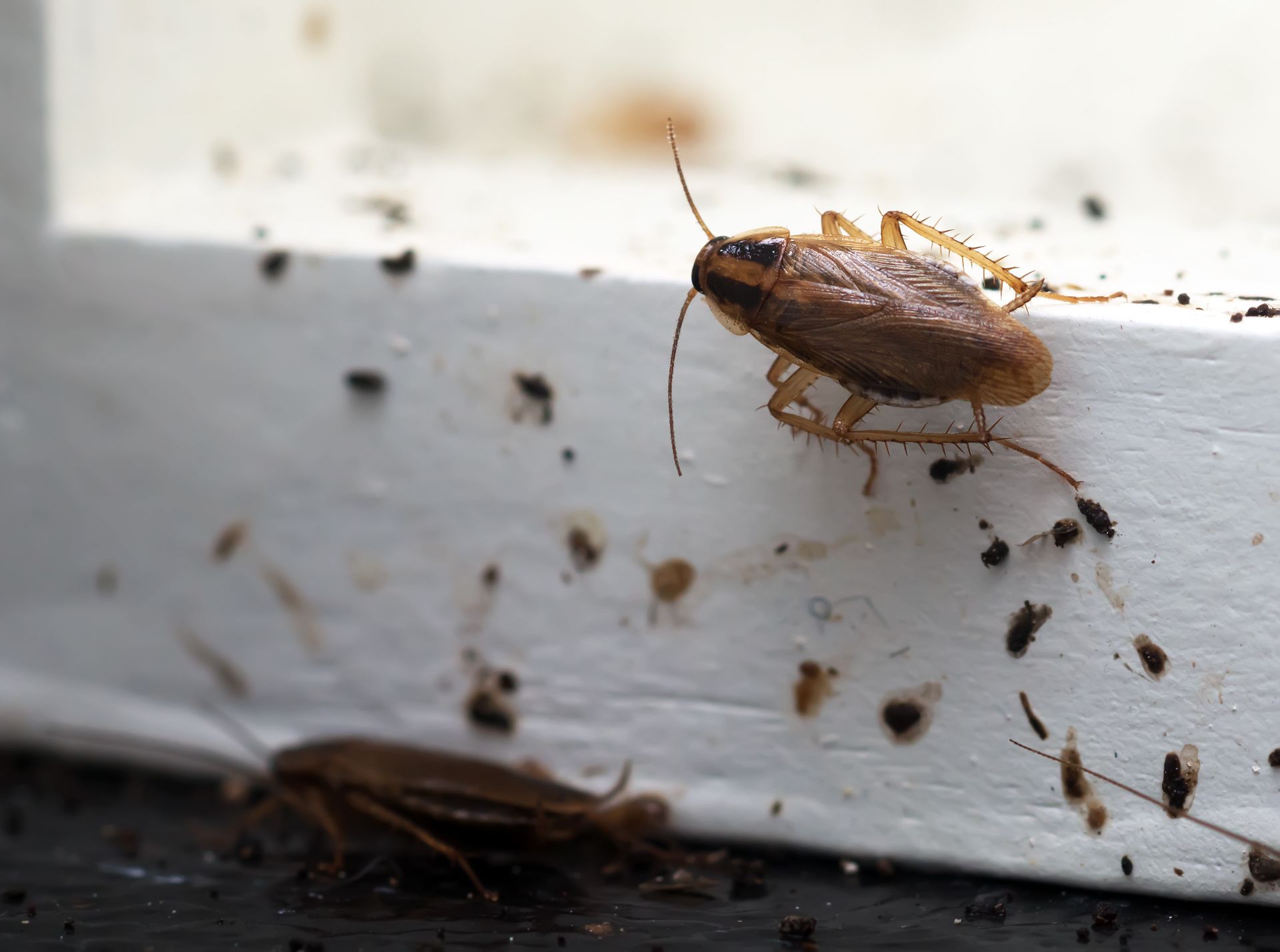
What Are German Cockroaches?
The German cockroach (Blattella germanica) is the most common cockroach species found worldwide They are notorious for infesting human-occupied spaces such as homes, restaurants, food processing facilities, hotels, and nursing homes. They are extremely adaptable and can thrive in a variety of environments, particularly where food and warmth are abundant. Their tan to almost black coloration, with two distinct dark streaks on their pronotum, makes them easily distinguishable from other cockroach species.
German cockroaches are not just a nuisance but also pose significant health risks. They are known to contaminate food, spread pathogens, and trigger allergies and asthma through their feces, shed skins, and dead bodies. This species' ability to develop insecticide resistance, coupled with their propensity to spread quickly through shared walls and utilities in apartment buildings, makes them an incredibly difficult pest to treat. Understanding the behavior, habitat, and control methods for German cockroaches is crucial for managing and preventing infestations effectively.
What Do German Cockroaches Look Like?
German cockroaches have small oval shaped bodies that are easily identifiable by their light brown to tan coloration and the two dark, almost parallel stripes located just behind the head. Adults measure between ½ to 5/8 inches in length. Despite having wings that extend the length of their bodies, these cockroaches rarely fly and prefer to run. German cockroaches have six legs and long antennae, which aid in their rapid movement and navigation through various environments. Nymphs, or immature German cockroaches, range from dark brown to black and also feature the characteristic dark stripes on their backs. They are smaller than adults and lack wings. Their distinct physical features make them relatively easy to identify and distinguish from other cockroach species.
German Cockroach Habitats
Although they are named German cockroaches, these pests are found all over the world. However, they are particularly sensitive to cold temperatures so they cannot survive in colder locations without human activity or central heating. This adaptability allows them to establish themselves in a variety of indoor locations, wherever conditions are favorable.
German cockroaches thrive in indoor environments where it's warm, humid, and there's easy access to food and water. Their survival and population growth are heavily dependent on the availability of resources, and they proliferate when temperatures are warm enough (around 70°F or 21°C). They can easily slip through tiny openings as small as 3/8 inch which makes any small crack or crevice a potential hiding spot. Kitchens are their preferred initial habitat because of the abundant food sources and moisture. Since they spend a significant portion of their time hidden in wall cracks and voids, infestations are usually far larger than they may seem when a single cockroach is sighted. As their numbers increase, they begin to spread from kitchens to other areas of the home like bathrooms, living rooms, and bedrooms.
German Cockroach Behavior
German cockroaches are excellent hitchhikers and often find their way into new environments via grocery bags, cardboard boxes, drink cartons, and secondhand appliances like refrigerators, televisions, and microwaves. They can also migrate from building to building on warm evenings. Their activity levels vary depending on their life stage, age, and physiological state. Reproducing females are quite active, whereas males tend to remain in their hiding places, even at night.
Although adult German cockroaches have wings, they cannot fly. They may flutter their wings to break a fall but rely primarily on their speed to get around, as they are fast runners. Their long antennae, which are slightly longer than their bodies, serve as powerful sensory devices for navigating their environment, locating food, and communicating with other roaches. Male German cockroaches are slightly smaller and thinner than females. Pregnant females will carry an egg capsule, or ootheca, that protrudes about a quarter inch from their abdomen. This capsule contains around 40 eggs, which get dropped in a concealed location shortly before they hatch. Understanding these behaviors is crucial for effective pest control, as it helps in targeting the right areas for treatment and using baits effectively to eliminate both adult and young roaches.
What Attracts German Cockroaches?
German cockroaches are attracted to environments that provide warmth, humidity, food, water, and shelter. Areas with food debris, moisture, and protection like garbage containers, kitchen cabinets, and spaces under sinks are particularly appealing to German cockroaches.
German Cockroach Diet
German cockroaches have an omnivorous and highly adaptable diet, and they can feed on almost anything with nutritional value. They are particularly attracted to meats, starches, sugars, and fatty foods but are not limited to these. In the absence of preferred food sources, German cockroaches will consume household items such as soap, glue, toothpaste, leather, and even book bindings. In extreme conditions, they may resort to feeding on the dead bodies and excrement of other cockroaches.
German Cockroach Life Cycle
The life cycle of the German cockroach consists of three stages: egg, nymph, and adult. The entire cycle can be completed in about 100 days under ideal conditions, though factors like temperature, nutrition, and environmental conditions can influence this timeline. German cockroaches breed continuously, resulting in overlapping generations and rapid population growth.
- Egg: The female German cockroach carries an egg case, or ootheca, which contains about 30 to 40 eggs. The ootheca is a small, dark brown, purse-shaped capsule that protrudes from the back end of the female. The eggs typically hatch while the female is still carrying the ootheca or sometimes after the ootheca has been deposited somewhere safe. This ensures the nymphs emerge in a protected environment.
- Nymph: Nymphs are dark brown to black and lack wings. They undergo 6 molts, also known as instar stages, to reach adulthood. During the nymphal stage, which lasts about 60 days at room temperature, they actively forage for food and water to ensure they have the nutrition they need to grow larger with each molt.
- Adult: Adult German cockroaches are ½ to 5/8 inches long and range in color from brown to dark brown, with two distinctive parallel stripes on the pronotum. Males are slender and tapered at the posterior, while females are slightly larger, rounder, and darker.
German Cockroach Lifespan
The lifespan of German cockroaches varies between males and females, with females typically living longer. Female German cockroaches live between 140 to 280 days, while males live approximately 90 to 140 days. During a female German cockroach’s lifetime, she can produce 5 to 8 oothecae, which can result in 150 to 320 eggs in her lifetime. The complete life cycle of a German cockroach, from egg to adult, takes about 100 days under optimal conditions.
Are German Cockroaches a Threat?
German cockroaches are more than just a nuisance. They pose significant health risks and can be implicated in outbreaks of illness and allergic reactions. These pests are known to spread at least 33 types of bacteria, six kinds of parasitic worms, and at least seven other human pathogens. As they crawl through decaying matter or sewage, they pick up germs on the spines of their legs and bodies, which can then be transferred to food and surfaces that humans frequently touch or consume food off. This leads to food poisoning and other related health issues. German cockroach allergens are another problem that humans may have to deal with. They are found in their saliva, droppings, and decomposing bodies and can trigger allergic reactions and exacerbate asthma attacks, particularly in children.
Do German Cockroaches Bite?
German cockroaches won’t intentionally bite humans. Their primary threat to human health lies in their ability to spread bacteria and other pathogens. If someone was bitten by a cockroach, it is most likely the result of the cockroach trying to eat food debris that was left on someone’s skin rather than an intentional attack or defensive maneuver.
Signs of a German Cockroach Infestation
Detecting a German cockroach infestation early can help in taking prompt action to control and eliminate these pests. Here are some common signs to look for:
- Droppings: Small, dark droppings resembling "pepper-like" material can be found on countertops, in drawers, and other areas where cockroaches frequent.
- Musty Odor: In large numbers, German cockroaches can emit a mild "musty" odor that becomes noticeable in infested areas.
- Egg Cases (Oothecae): Discovering egg cases, which are small, brown, purse-shaped capsules, indicates an active infestation. These are often found in hidden areas like behind appliances or inside cabinets.
- Shed Skins: As nymphs grow, they molt several times and leave behind shed skins that can be found in areas of high activity.
- Live Cockroaches: Seeing live cockroaches, especially during the day, is a strong indicator of a significant infestation.
Being aware of these signs can help in identifying and addressing a German cockroach infestation promptly and prevent the further spread and health risks associated with these pests.
How to Get Rid of German Cockroaches
Getting rid of German cockroaches requires a combination of good sanitation practices, non-chemical methods, and, if necessary, chemical treatments. Here are several effective strategies to eliminate these pests:
- Sanitation: Maintain a clean kitchen by cleaning up crumbs, wiping spills, and vacuuming often. Avoid leaving dishes piled up in the sink and ensure trash and recycling are removed daily. Keep pet food sealed or removed during the night and periodically clean floors, cabinets, and behind appliances to eliminate food debris and water sources.
- Seal Entry Points: Seal all entrances to your home, especially around utility pipes to prevent moisture buildup. Any gap that is the width of a credit card will allow cockroaches in so it’s important to check all corners and edges of a home to see if there are any spaces that need to be filled.
- Non-Chemical Methods: Use vacuum cleaners with HEPA filters to remove live and dead cockroaches, fecal materials, and shed skins. Monitor the presence and distribution of cockroaches with sticky traps placed in strategic locations like inside kitchen cabinets, near garbage cans, and behind appliances. Regularly inspect and empty these traps.
- Baiting: Apply gel baits or bait stations in areas where cockroaches are likely to hide like under sinks, in corners of cabinets, and around kitchen appliances. Baits with active ingredients like fipronil, abamectin, indoxacarb, hydramethylnon, and dinotefuran are particularly effective.
- Dusts: Use boric acid dust in combination with baits to treat areas not accessible to children or pets like under and behind appliances and in wall cavities. Boric acid is slow-acting but effective as it kills cockroaches when ingested during grooming.
For severe infestations, it is best to contact a professional pest control service. Professionals can use a variety of treatment methods including targeted applications of baits, dusts, and aerosol treatments, as well as non-chemical techniques like vacuum removal and monitoring. Regular follow-up treatments and inspections are essential to ensure complete eradication and to prevent re-infestation.
Contact EcoGuard Pest Management if You are Dealing with Cockroaches
Dealing with a German cockroach infestation can be overwhelming and challenging to manage on your own. For effective and lasting results, consider reaching out to EcoGuard Pest Management. Our team of experienced professionals uses the latest techniques and treatments to ensure your home is thoroughly protected from these persistent pests. Don't let cockroaches compromise your comfort and health. Contact EcoGuard Pest Management today for a comprehensive inspection and customized pest control plan. Let us help you reclaim your home and maintain a pest-free environment.
German Cockroach FAQs
Is the German cockroach harmful?
The German cockroach is harmful as it can spread various diseases and trigger asthma and allergic reactions. They are known to carry several types of bacteria, parasites, and other pathogens and can contaminate food and surfaces as they crawl across them. Additionally, their allergens can exacerbate asthma and cause other allergic reactions.
What do I do if I see a German cockroach?
If you see a German cockroach, take immediate action to prevent an infestation. Clean the area thoroughly to remove food and water sources, seal any cracks or entry points, and set up traps or bait stations to catch and eliminate the cockroaches. For effective control and to ensure complete eradication, consider contacting a professional pest management service.
Why do they call them German cockroaches?
German cockroaches are called so because they were mistakenly believed to have originated in Germany. However, researchers now believe they likely originated in Southeast Asia. The name has persisted despite this updated understanding of their origins.
What are German cockroaches attracted to?
German cockroaches are attracted to warm, humid environments with easy access to food and water. They are commonly drawn to kitchens, bathrooms, and areas where food is stored or prepared. Additionally, they are attracted to crumbs, spills, pet food, and even non-food items like soap and glue.


